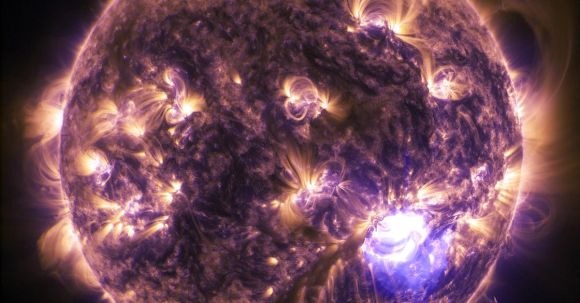Gravitational waves are one of the most intriguing phenomena in the field of astrophysics. First predicted by Albert Einstein in his theory of general relativity, these ripples in the fabric of spacetime have captured the imagination of scientists and the general public alike. But what exactly are gravitational waves, and how do they affect us?
Understanding Gravitational Waves
To comprehend gravitational waves, we must first understand the concept of spacetime. According to Einstein’s theory, spacetime is not a static entity but rather a dynamic fabric that can be warped and distorted by massive objects. When massive objects, such as black holes or neutron stars, accelerate or change their motion, they create ripples in this fabric, which propagate outward as gravitational waves.
Unlike other waves, such as light or sound waves, gravitational waves do not require a medium to travel through. They can travel through the vacuum of space, unaffected by any intervening matter. This is what makes them so fascinating and challenging to detect.
Detecting Gravitational Waves
For decades, scientists have been striving to detect gravitational waves directly. In 2015, their efforts bore fruit when the Laser Interferometer Gravitational-Wave Observatory (LIGO) announced the first-ever direct observation of gravitational waves. This groundbreaking discovery confirmed Einstein’s theory and opened up a new window into the universe.
LIGO detects gravitational waves by using laser interferometry. Two perpendicular beams of laser light are sent down long, vacuum-sealed arms, and when a gravitational wave passes through the observatory, it causes a tiny change in the lengths of the arms. This change is detected as an interference pattern, allowing scientists to measure the gravitational wave’s properties, such as its frequency and amplitude.
The Impact of Gravitational Waves
Gravitational waves have had a profound impact on our understanding of the universe. They have provided a new way to study cosmic phenomena that were previously hidden from our view. For example, the merger of two black holes or neutron stars can release an enormous amount of energy in the form of gravitational waves. By studying these waves, scientists can learn more about the properties of black holes and neutron stars, as well as the nature of gravity itself.
Moreover, the detection of gravitational waves has opened up new avenues for multi-messenger astronomy. By combining the information from gravitational waves with observations in other wavelengths, such as light or radio waves, scientists can gain a more comprehensive picture of astrophysical events. This has led to the discovery of new phenomena, such as kilonovae, which are bright explosions that occur during the merger of neutron stars.
The Future of Gravitational Wave Astronomy
With the success of LIGO, the field of gravitational wave astronomy has entered a new era. Several other gravitational wave observatories, such as Virgo in Italy and KAGRA in Japan, have also joined the search. These observatories, along with future planned missions, will enable scientists to detect gravitational waves from a wider range of sources and with greater precision.
In the coming years, gravitational wave astronomy is expected to revolutionize our understanding of the cosmos. It will allow us to explore the mysteries of dark matter and dark energy, investigate the origins of the universe, and perhaps even provide insights into the elusive theory of quantum gravity.
In conclusion, gravitational waves are a fascinating and significant aspect of our universe. Their discovery has opened up new frontiers in astrophysics and provided us with a new tool to explore the cosmos. As we continue to unravel the secrets of gravitational waves, we can expect to gain a deeper understanding of the fundamental workings of our universe and the forces that shape it.





